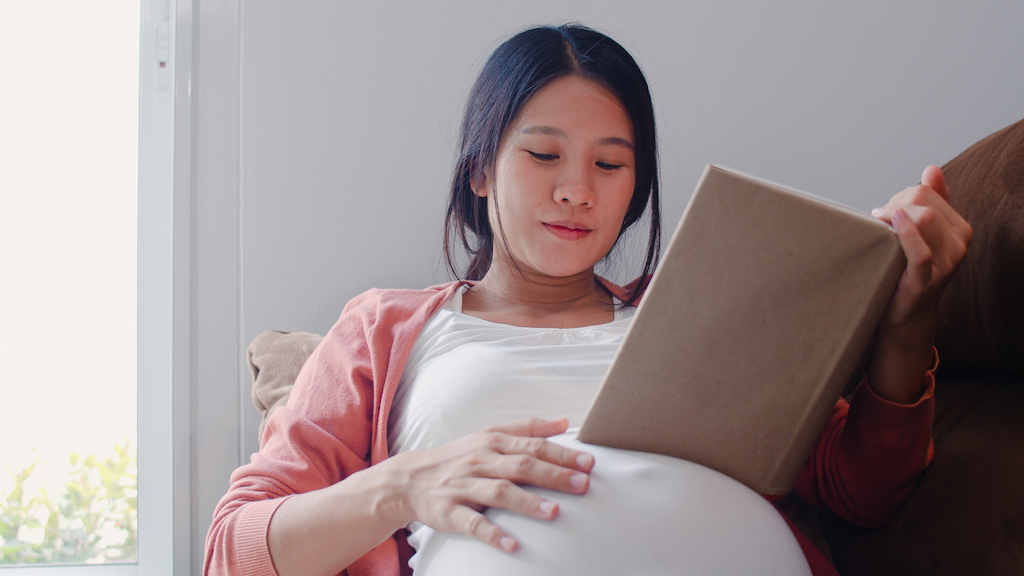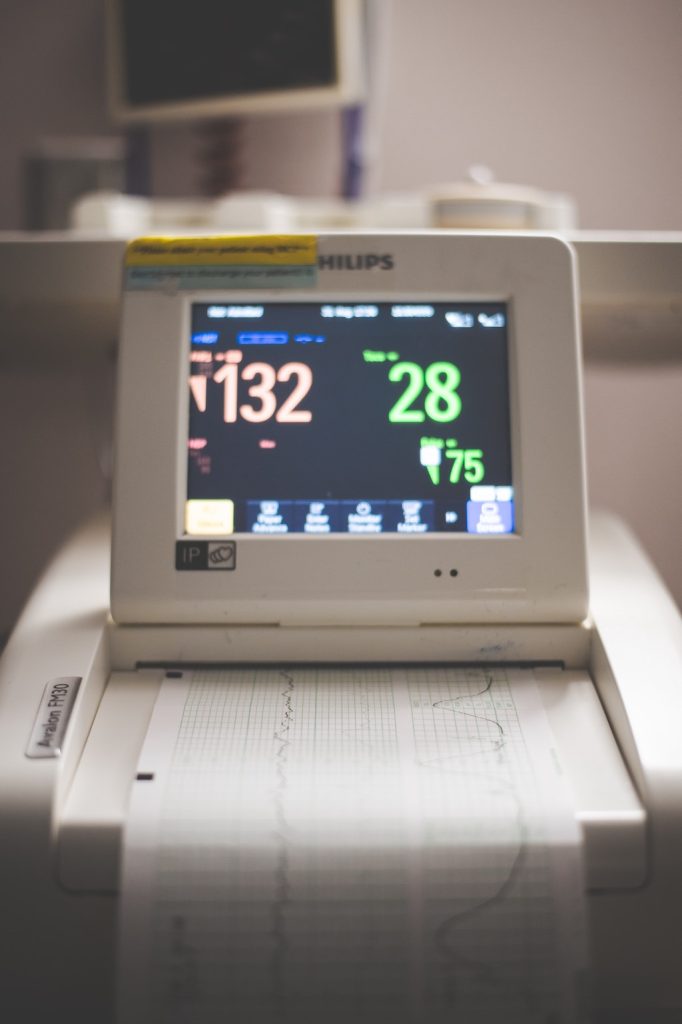SingaporeMotherhood | Pregnancy
January 2024
Beyond the Contractions: Your Ultimate Guide to Labour Pain Relief. Read this Before you Give Birth!

Childbirth is a miraculous experience but for first-time mums, it can be daunting. You wonder if your baby will be okay, and whether everything will proceed well. On top of all that, the anticipation of labour pain looms large. Truth: labour is painful. Also truth: labour pain can be managed to give you a smoother and more comfortable birthing experience. With that in mind, meet two men who help turn labouring women’s screams into smiles!
Dr Paul Tan Hon Sen and Dr Lim Ming Jian are Consultant Anaesthetists who specialise in women’s anaesthesia and labour pain relief. They are also the faces behind the Instagram account @twodrsonegoal where they educate mums-to-be (and all of us) about pain management options, and provide a more supportive ecosystem for all mums.
Tell us about a typical day (or night) on your job.
This is a story of how epidurals earned the nickname “happy-durals”. In the depths of the night (somehow it’s always late at night), we often receive urgent calls to help labouring mothers in severe pain. After getting our sleep-deprived minds and bodies in gear, we inevitably arrive to find an extremely distressed patient screaming and writhing in bed, with her partner looking rather lost as to what he should do. Obviously, these patients find it hard to keep still when they are experiencing contraction pains, which makes the epidural procedure much more challenging.
But the magic happens after we have quickly (but carefully) inserted the epidural. A screaming, writhing patient suddenly transforms into a relaxed, smiling, and very grateful woman. It is moments like these that remind us that we have the ability to help our patients through a significant milestone in their lives, and provide the motivation to trudge on through the night. And this is also why epidurals are known as “happy-durals”!
(See also: PREGNANT? USE THIS PREGNANCY CHECKLIST TO PLAN FOR THE NEXT 9 MONTHS)
Nice! But surely that’s not the best time to think about labour pain relief options?
Labour pain relief should be customised to each individual’s preferences and needs. There is a lot of information to digest, hence discussion about pain relief should ideally take place in the third trimester, prior to labour onset. This is to avoid time pressure and distractions, and to allow adequate time for women to decide which forms of pain relief might be the best for their needs. However, discussion regarding pain relief can occur anytime, even at preconception or during labour.

Are women more open to it now than before?
Women are more open to considering pain relief in labour now. This may be due to better access to information. This may also reflect change in traditional perspectives. Previously, the use of labour pain relief may be considered a sign of weakness. Now, more women view pain relief as an important part of their labour and delivery, analogous to anaesthesia for surgical procedures.
@twodrsonegoal
Which labour pain relief method is the most popular?
We have noticed an increasing trend of epidural usage. At our institution, approximately 50% of mothers request for labour epidurals.
What are the different options for pain relief during labour?
Please note that this is not an exhaustive list. There are many non-pharmacological measures for pain relief including:
- Childbirth education
- Massage
- Aromatherapy
- Music listening
- Use of hot/cold packs
- Transcutaneous electrical nerve stimulation (TENS)
- Hypnosis
- Hydrotherapy
- Acupuncture

Pharmacological measures for labour pain relief include:
- Entonox (nitrous oxide or laughing gas)
- Intramuscular injection of pethidine (an opioid similar to morphine)
- Intravenous remifentanil (an opioid similar to morphine, but much shorter acting)
- Epidural analgesia
That’s a lot! Where should we begin?
We believe everybody should start with childbirth education. Knowing what to expect during labour and delivery will help reduce fear and anxiety. Having some basic knowledge will help women feel empowered and in control of their health, and also facilitates a deeper discussion of their clinical management and pain relief. Also, studies have shown that the adrenaline rush associated with fear and anxiety heightens sensory perceptions which may amplify the severity of labour pain.
@twodrsonegoal
🤰🏻Massage, aromatherapy, music listening, and self-hypnosis
These reduce the perception of pain through distraction and by maintaining a sense of calm. Although these come with no risk of adverse effects, their effectiveness vary considerably. Regardless, it is worth noting that these can be added onto other forms of pain relief.

🤰🏻Hydrotherapy, waterbirth, or acupuncture
These are not widely available locally, and it is best to consult a qualified professional to discuss their risks and benefits. Hydrotherapy or water birth involves immersion in a purpose-built tub filled with warm water that is deep enough to cover the abdomen. This requires a special facility and a medical team that is experienced in this type of birth. Acupuncture requires a trained acupuncturist to help place needles in the appropriate acupressure points to help relieve labour pain.
🤰🏻Transcutaneous electrical nerve stimulation (TENS)
This involves applying electrodes to areas on the lower back to deliver low intensity, high frequency electrical impulses to help reduce pain. When used by trained professionals, the risk of TENS is minimal – some women experience prickling or tingling that may be uncomfortable. TENS should not be used in patients with heart conditions, pacemakers, and epilepsy. However, the effectiveness of TENS varies.
(See also: 10 PRENATAL PILATES CLASSES IN SINGAPORE FOR PREGNANCY FITNESS AND CONDITIONING)
🤰🏻Entonox (laughing) gas
This is a mixture of nitrous oxide and oxygen in a 50:50 ratio delivered via a face mask. Most women receive some pain relief from Entonox, but it is generally less effective than epidural or remifentanil. Entonox can cause sedation, nausea, and vomiting.
(See also: 9 MUST-HAVES TO REDUCE STRETCH MARKS WHILE SOOTHING AND PAMPERING YOUR PREGNANT BELLY)
🤰🏻Pethidine
This is administered via injection in the thigh to provide pain relief during the early stages of labour (< 4cm cervical dilation). As pethidine is an opioid medication (same drug class as morphine), it is associated with side effects such as nausea, vomiting, sedation, and inadequate breathing in the mother. More importantly, it can also cause temporary breathing issues in the baby at birth. This is why it is typically used during early labour, to allow its effects on the baby to wear off prior to delivery.
🤰🏻Remifentanil
This is a strong painkiller that acts quickly and lasts only a short while. Using a patient-controlled analgesia (PCA) device, the mother is in control of her pain relief. Importantly, the patient will need to trigger the PCA to deliver remifentanil at the start of each contraction, and continue doing this for the duration of labour. Although remifentanil is an opioid and has risks of nausea/vomiting, sedation, and slowed breathing, it wears off rapidly and is therefore considered safer for both mother and child.
(See also: CAN I TAKE A FLIGHT WHILE PREGNANT?)
🤰🏻Labour epidural
This is a safe and effective way of relieving labour pain when administered by an anaesthetist. After providing local anaesthesia, a needle is inserted into the lower back to place a thin flexible plastic catheter within the epidural space near the spine. With this catheter, painkillers can be continuously given during labour. Common but transient adverse effects include drop in blood pressure (treatable using IV fluids or medications), nausea/vomiting, shivering, itch, and fever.
In some cases, the epidural catheter may not be positioned optimally or may shift out of position, and will need adjustment or a repeat procedure. Back ache at the epidural site is common after delivery, but should improve over a week or so. Some mothers associate back ache with the epidural, but it can be caused by several things, including straining during delivery.
Some patients may experience a headache (< 1% of cases), usually within two days after the epidural. Permanent nerve damage, infection, or bleeding within the spine are extremely rare.
What are the biggest myths about pain relief during labour?
One of the biggest misconceptions is that receiving pain relief during labour is a sign of weakness. However, every individual is different, with varying sensitivity to pain. In other words, a certain amount of pain will have variable effects on different people, who may perceive pain differently. The amount of pain during labour also varies due to obstetric or medical factors. Two labouring women may experience differing levels of pain.
Another myth regarding epidurals is that if performed too early in labour, the effects might wear off before delivery. This isn’t true. During the procedure, a thin and flexible plastic catheter is positioned in the epidural space, which allows pain relief to be maintained throughout labour. However, a minority of patients experience pain after the epidural is inserted. This can be due to many factors (e.g. catheter shifts out of position) and requires assessment by the anaesthetist.
Also, as labour progresses, the baby may press on areas in the pelvis which are not well covered by the epidural. Finally, depending on the situation, the dose of epidural medications may be reduced at later stages of labour to encourage pushing.
Does pain relief always work?
Unfortunately, pain relief doesn’t always work, but the reasons depend on many factors. Certain forms of pain relief are less effective than others. For example, Entonox (laughing gas) is generally considered less effective than epidural. As mentioned earlier, the epidural catheter can shift out of position and result in pain recurrence. Hence it is important for patients to communicate about their pain, so that the anaesthetist can assess and make adjustments. We can also switch to a different form of pain relief that may be more effective.
(See also: 10 POSTNATAL MASSAGE SERVICES TO HELP YOU HEAL AND SLIM DOWN AFTER GIVING BIRTH)
Are there women who cannot take pain relief during labour?
The vast majority of women can receive pain relief, but certain forms may be more suitable than others. For instance, patients with medical conditions that affect their breathing (e.g. obstructive sleep apnea) may not be suitable for remifentanil or pethidine, as these drugs come with risks of slowed breathing. Likewise, epidural comes with (rare) risks of bleeding into the spine, infection, nerve damage, etc. which is increased in women with blood clotting disorders issues, ongoing infection, or spine abnormalities.
Nitrous oxide (laughing gas) and non-pharmacological forms of pain relief during labour, including music therapy, aromatherapy, meditation, and transcutaneous electrical nerve stimulation (TENS) are generally safe. Your anaesthetist can advise you in detail about the forms of pain relief that best suit your individual condition and preferences.
When is it too late to request for pain relief during labour?
Most forms of pain relief can be given during labour, though we avoid pethidine in later stages as it might cause temporary sedation and breathing issues in the newborn. Epidural can be inserted during labour as long as the mother can keep still during the procedure. However the mother may not receive its full benefits if she is about to deliver soon (cervix fully dilated). Entonox and other forms of non-invasive pain relief can be used anytime during labour.

What should partners and dads-to-be know about pain relief?
Partners should understand that labour pain is very intense. Some studies report that labour pain is the greatest level of pain most women experience in their lives. The good news is that pain is very dependent on the woman’s perspective and emotions. Research shows that women with good emotional support from their families and partners cope better with pain.
(See also: 10 THINGS TO DO AFTER YOUR BABY IS BORN)
We also suggest that partners play an active role in discussion regarding labour pain relief, and help the mum-to-be decide on which forms of pain relief will be suitable. During labour, partners can help create a calming and supportive environment using music, meditation, breathing exercises, or encouraging words. They should understand that labour/delivery is not easy, and try to remain supportive and patient throughout this process.
If you have questions on labour pain relief, feel free to ask here. Drs Tan and Lim will be happy to answer them 🙂

Featured image: jcomp on Freepik
All content from this article, including images, cannot be reproduced without credits or written permission from SingaporeMotherhood.
Follow us on Facebook, Instagram, and Telegram for the latest article and promotion updates.





